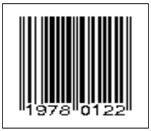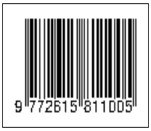POTENSI TINTA GURITA (OCTOPUS SP.) SEBAGAI IMUNOSTIMULAN PADA UDANG VANAME (LITOPENAEUS VANNAMEI)
Abstract
Keywords
Full Text:
PDFReferences
Affandi, R. I., Fadjar, M., & Ekawati, A. W. (2019). Active compounds on squid (Loligo sp.) ink extract powder as immunostimulants candidate to against shrimp disease. Research Journal of Life Science, 6(3), 150-161. https://doi.org/10.21776/ub.rjls.2019.006.03.1
Aji, A., Bahri, S., & Tantalia. (2017). Pengaruh waktu ekstraksi dan konsentrasi HCl untuk pembuatan pektin dari kulit jeruk bali (Citrus maxima). Jurnal Teknologi Kimia Unimal, 6(1), 33-44. https://doi.org/10.29103/jtku.v6i1.467
Badaring, D. R., Sari, S. P. M., Nurhabiba, S., Wulan, W., & Lembang, S. A. R. (2020). Uji ekstrak daun maja (Aegle marmelos L.) terhadap pertumbuhan bakteri Escherichia coli dan Staphylococcus aureus. Indonesian Journal of Fundamental Sciences, 6(1), 16-26. https://doi.org/10.26858/ijfs.v6i1.13941
Besednova, N. N., Zaporozhets, T. S., Kovalev, N. N., Makarenkovaa, I. D., & Yakovlev, Y. M. (2017). Cephalopods: the potential for their use in medicine. Russian Journal of Marine Biology, 43(2), 101-110. https://doi.org/10.1134/S1063074017020031
Derby, C. D. (2014). Cephalopod ink: production, chemistry, functions and applications. Marine Drugs, 12, 2700-2730. https://doi.org/10.3390/md12052700
Diaz, J. H. J., & Thilaga, R. D. (2016). Screening of antimicrobial activities in the ink of cephalopods against human pathogens. World Journal of Pharmacy and Pharmaceutical Sciences, 5(6), 2359-2367. https://doi.org/10.20959/wjpps20166-7073
Fadjar, M., Andajani, S., & Zaelani, K. (2016). Squid (Loligo edulis) ink raw extract as an anti-vibriosis substance in grouper (Epinephelus fuscoguttatus) juvenile culture infected by Vibrio alginolyticus. AACL Bioflux, 9(2), 422-428. Retrieved from http://www.bioflux.com.ro/docs/2016.422-428.pdf
Fadjar, M., Andayani, S., Ramadani, N. A., Marbun, Y. M., Agustin, I., Satria, I. B., & Suwandi, L. R. (2020). Curative impacts of squid (Loligo sp.) ink extract on haemocyte, digestive enzymes and CypA gene expression of vaname shrimp (Litopenaeus vannamei) against white faeces syndrome (WFS). Aquaculture Research, 51(11), 1-9. https://doi.org/10.1111/are.14788
Febriani, D., Sukenda & Nuryati, S. (2013). Kappa-karagenan sebagai imunostimulan untuk pengendalian penyakit infectious myonecrosis (imn) pada udang vaname Litopenaeus vannamei. Jurnal Akuakultur Indonesia, 12(1), 70-78.
Ghufron, M., Lamid, M., Sari, P. D. W., & Suprapto, H. (2017). Teknik pembesaran udang vaname (Litopenaeus vannamei) pada tambak pendampingan PT Central Proteina Prima Tbk di Desa Randutatah, Kecamatan Paiton, Probolinggo, Jawa Timur. Journal of Aquaculture and Fish Health, 7(2), 70-77. https://doi.org/10.20473/jafh.v7i2.11251
Girija, S., Priyadharshini, J. V., Suba, K. P., Hariprasad, G., & Raghuraman, R. (2011). Isolation and characterization of lolduvin-S: A novel antimicrobial protein from the ink of Indian squid Loligo duvauceli. International Journal of Current Research and Review, 3(7), 4-14. Retrieved from https://ijcrr.com/uploads/2142_pdf.pdf
Girija, A. S. S., Suba, K. P., Hariprasad, G., & Raghuraman, R. (2014). A novel study on the antibacterial effect of the crude squid ink extracts from the Indian squid against four bacterial pathogens isolated from carious dentine. International Journal of Current Microbiology and Applied Sciences, 3(4), 904-911. Retrieved from https://www.ijcmas.com/vol-3-4/A.S.Smiline%20Girija,%20et%20al.pdf
Hernandez-Zazueta, M. S., Luzardo-Ocampo, I., Garcia-Romo, J. S., Noguera-Artiaga, L., Carbonell-Barrachina, A. A., Taboada-Antelo, P., Campos-Vega, R., Rosas-Burgos, E. C., Burboa-Zazueta, M. G., Ezquerra-Brauer, J. M., & Burgos-Hernandez, A. (2021). Bioactive compounds from Octopus vulgaris ink extracts exerted anti-proliferative and anti-inflammatory effects in vitro. Food and Chemical Toxicology, 151, 1-14. https://doi.org/10.1016/j.fct.2021.112119
Hossain, M. P., Rabeta, M. S., & Azan, T. H. (2019). Medicinal and therapeutic properties of cephalopod ink: a short review. Food Research, 3(3), 188-198. https://doi.org/10.26656/fr.2017.3(3).201
Huliselan, Y. M., Runtuwene, M. R. J., & Wewengkang, D. S. (2015). Ativitas antioksidan ekstrak etanol, etil asetat, dan n-heksan dari daun sesewanua (Clerodendron squamatum Vahl.). PHARMACON Jurnal Ilmiah Farmasi-UNSRAT, 4(3), 155-163. https://doi.org/10.35799/pha.4.2015.8855
Kalor, J. D., Simaremare, E. S., Futwembun, A., Wabiser, G., Gunawan, E., & Yabansabra, Y. R. (2019). Cytotoxic test of Octopus cyanea ink extract. Journal of Ecological Engineering, 20(8), 144-152. https://doi.org/10.12911/22998993/111153
Kilawati, Y., & Maimunah, Y. (2015). Kualitas lingkungan tambak intensif Litopenaeus vannamei dalam kaitannya dengan prevalensi penyakit white spot syndrome virus. Research Journal of Life Science, 2(1), 50-59. https://doi.org/10.21776/ub.rjls.2015.002.01.7
Manoppo, H., & Kolopita, M. E. F. (2016). Penggunaan ragi roti (Saccharomyces cerevisiae) sebagai imunostimulan untuk meningkatkan resistensi ikan mas (Cyprinus carpio L) terhadap infeksi bakteri Aeromonas hydrophila. Budidaya Perairan, 4(3), 37-47. https://doi.org/10.35800/bdp.4.3.2016.14945
Marentek, G. A., Manoppo, H., & Longdong, S. N. J. (2013). Evaluation of the use of garlic (Allium sativum) in enhancing nonspecific immune response and growth of nile tilapia (Oreochromis niloticus). Budidaya Perairan, 1(1), 1-7. https://doi.org/10.35800/bdp.1.1.2013.719
Moustafa, A. Y., & Awaad, A. (2016). Comparative histopathological and histochemical impacts induced by the posterior salivary gland and ink sac extracts of Octopus vulgaris in mice. The Journal of Basic & Applied Zoology, 74, 23-36. http://dx.doi.org/10.1016/j.jobaz.2016.04.001
Nair, J. R., Pillai, D., Joseph, S. M., Gomathi, P., Senan, P. V., & Sherief, P. M. (2011). Cephalopod research and bioactive substances. Indian Journal of Geo-Marine Sciences, 40(1), 13-27. Retrieved from http://nopr.niscpr.res.in/bitstream/123456789/11363/1/IJMS%2040%281%29%2013-27.pdf
Nicomrat, D., & Tharajak, J. (2015). Antimicrobial effect of squid ink on common microbial causing biofilm attaching to silicone. Applied Mechanics and Materials. 804, 191-194. https://doi.org/10.4028/www.scientific.net/AMM.804.191
Nirmale, V., Nayak, B. B., Kannappan, S., & Basu, S. (2002). Antibacterial effect of the Indian squid, Loligo duvauceli (d'Orbigny), ink. Journal of the Indian Fisheries Association, 29, 65-69. Retrieved from https://aquadocs.org/bitstream/handle/1834/32412/JIFA29_065.pdf?sequence=1&isAllowed=y
Putri, F. A., Bramasta, D., & Hawanti, S. (2020). Studi literatur tentang peningkatan kemampuan berpikir kritis siswa dalam pembelajaran menggunakan model pembelajaran the power of two di SD. Jurnal Educatio FKIP UNMA, 6(2), 605-610. https://doi.org/10.31949/educatio.v6i2.561
Sari, R. C., Wijayanti, I., & Agustini, T. W. (2019). The effectiveness of melanin from squid ink (Loligo sp.) as antibacterial agent against Escherichia coli and Listeria monocytogenes. IOP Conference Series: Earth and Environmental Science, 246, 1-8. https://doi.org/10.1088/1755-1315/246/1/012022
Shazwani, Z. A., & Rabeta, M. S. (2020). Enzymatic hydrolysis as an approach to produce alternative protein from cephalopods ink powder: a short review. Food Research, 4(5), 1383-1390. https://doi.org/10.26656/fr.2017.4(5).423
Thang, N. D., Tu, L. D., Na, N. T. L., Trang, N. T., & Nghia, P. T. (2019). Melanin-containing feedstuffs protect Litopenaeus vannamei from white spot syndrome virus. International Aquatic Research, 11, 303-310. https://doi.org/10.1007/s40071-019-00240-4
Utami, W., Sarjito., & Desrina. (2016). Pengaruh salinitas terhadap efek infeksi Vibrio harveyi pada udang vaname (Litopenaeus vannamei). Journal of Aquaculture Management and Technology, 5(1), 82-90. Retrieved from https://ejournal3.undip.ac.id/index.php/jamt/article/view/10691
Vennila, R., Kumar, R. K. R., Kanchana, S., Arumugam, M., & Balasubramanian, T. (2011). Investigation of antimicrobial and plasma coagulation property of some molluscan ink extracts: Gastropods and cephalopods. African Journal of Biochemistry Research, 5(1), 14-21. https://doi.org/10.5897/AJBR.9000147
Zaharah, M. Y. F. & Rabeta, M. S. (2018). Antioxidant and antimicrobial activities of squid ink powder. Food Research, 2(1), 82-88. https://doi.org/10.26656/fr.2017.2(1).225
DOI: https://doi.org/10.35327/gara.v17i1.403
Refbacks
- There are currently no refbacks.
Copyright (c) 2023 GANEC SWARA

This work is licensed under a Creative Commons Attribution-ShareAlike 4.0 International License.










